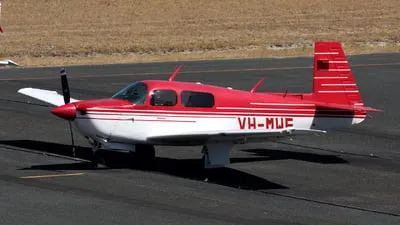Mooney Short-Body vs. Long-Body: Understanding the Differences and Performance Implications
As someone who’s had the privilege of owning both short-body and long-body Mooneys over my 25-year flying career, I’ve developed a deep appreciation for the nuanced differences between these two airframe configurations. While casual observers might focus solely on the cabin size difference, the engineering implications extend far beyond mere passenger comfort. In my experience, short-body Mooneys (pre-1977 models like the M20C and M20F) offer a distinctive flying character that some pilots, myself included, find more responsive and direct. The shorter fuselage creates a more compact moment arm, resulting in noticeably crisper pitch response. The long-body variants (post-1977 models including the M20J and later) trade some of that nimbleness for improved stability, particularly in turbulence, along with the obvious benefit of additional cabin space. When instructing pilots transitioning between these variants, I emphasize the importance of adapting their control inputs to match the airframe’s handling characteristics. While the specifications tell part of the story, it’s the subjective feel that truly separates these aircraft generations. Having logged over 2,000 hours in each configuration, I can confidently say that both designs represent engineering excellence, just with different priorities in the perpetual aviation tradeoff between performance, comfort, and handling.

Understanding the distinction between “short-body” and “long-body” Mooneys requires examining both historical context and technical specifications. The terminology stems from a significant design change implemented by Mooney in 1977, when the company extended the fuselage by 10 inches (primarily in the cabin section) to create more interior space. This modification marked the transition from the earlier short-body models (M20C, M20E, M20F) to the long-body variants (M20J and subsequent designs). The extension added approximately 13 cubic feet of cabin volume, providing more shoulder room and allowing for a larger baggage compartment. From a performance perspective, the longer fuselage slightly increased empty weight (typically 50-100 pounds) while marginally reducing cruise speed (approximately 2-3 knots at similar power settings). Aerodynamically, the longer fuselage created greater longitudinal stability, which many pilots report makes the aircraft less sensitive in pitch and more comfortable in turbulence. The tradeoff comes in handling response, with short-body advocates often describing their aircraft as more nimble and responsive. The modifications also included subtle changes to the tail design to compensate for the altered aerodynamics of the longer fuselage. Beyond the fuselage length, other significant differences evolved over time, including the transition from manual landing gear to hydraulic systems in later models, improved cabin soundproofing, and updated panel layouts. From a market perspective, long-body models typically command a premium of 10-20% over comparable short-body variants, reflecting both the increased utility and more recent manufacturing dates.